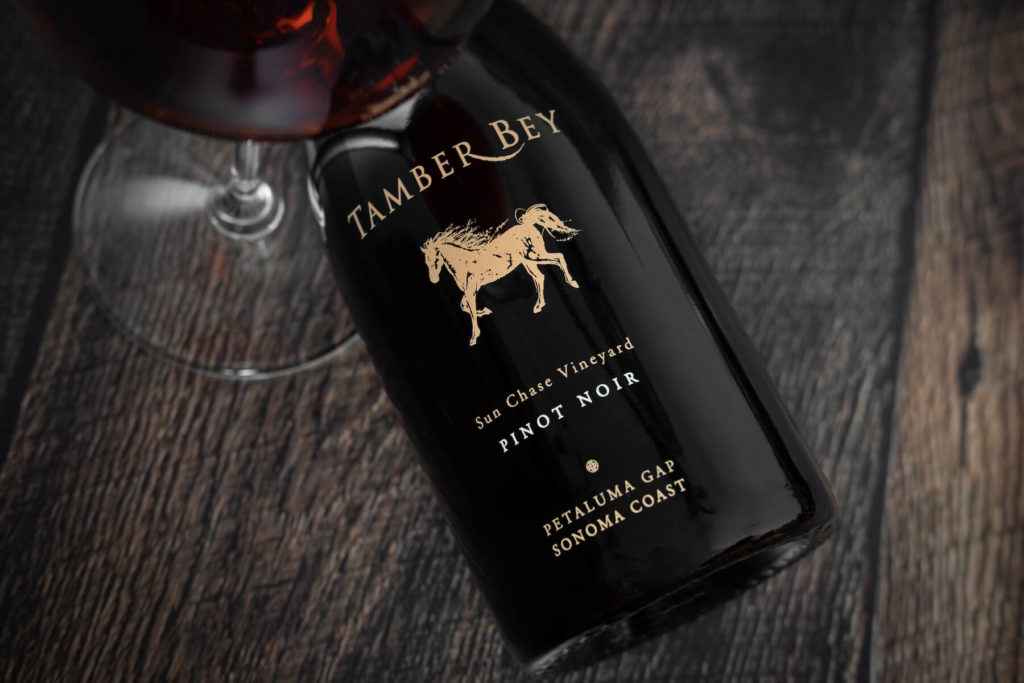
Vintner Barry Waitte was always of opinion that Tamber Bey’s wine program should focus on the Bordeaux varietals: Cabernet Sauvignon, Cabernet Franc, Merlot, Petit Verdot, Malbec, and Sauvignon Blanc. For years, our portfolio has focused on single-varietal wines and blends using these Bordeaux grapes. After all, that’s what Napa Valley is known for, right?
The exception to this has been our Deux Chevaux Vineyard Chardonnay, a Dijon-clone Chardonnay that we produce the old-fashioned way by barrel fermenting and barrel ageing the juice. This Chardonnay is actually one of our original three wines. The only reason we started making it was because the grapes were already growing in the Deux Chevaux Vineyard when Barry purchased it back in 1999. At first, he sold the grapes. Then, when the 2.5-acre block of Chardonnay was red-tagged as part of a complete north block replanting project, our then-winemaker Thomas Brown talked Barry out of dishing in the Chardonnay. As a result, we started making a little Chardonnay but still promoted the brand’s focus on Bordeaux-style wines. Barry never factored “Burgundy” into the Tamber Bey business plan.
Fast forward to 2012. We added two Burgundy wines to our program: The Trio Vineyard Chardonnay and the Sun Chase Vineyard Pinot Noir. The Trio came to be because our winemaker wanted to make a stainless-steel-aged alternative to our barrel-aged Chardonnay. Because our 2.5 acres of Dijon fruit couldn’t produce enough for a second wine, we elected to source the same Dijon fruit from another Yountville Vineyard, the Trio. We have since planted more Dijon Chardonnay in the Deux Chevaux Vineyard to support both wine projects, the original barrel-aged Chardonnay, and the Sans Chêne Chardonnay, which is stainless-steel aged.
We practically stumbled across an opportunity to purchase Pinot Noir fruit from the famous Sun Chase Vineyard on the Sonoma Coast, in an area known as the Petaluma Gap. This opportunity intrigued Barry and our winemaking staff. We’d never made Pinot Noir, and the varietal is considered the “winemaker’s grape,” because it is the most difficult wine to produce due to the grape’s ripening challenges and delicate attributes. We gave it a try and were rewarded with fantastic results. The first vintage of our Sun Chase Pinot Noir was everything we love in this wine: spicy, robust and well balanced. The wine was well-received by our customers and so we decided to continue to make it.
Then we decided to make a second Pinot Noir, again because we had an opportunity to acquire fruit from a unique vineyard. This time, the vineyard was the Walala, located in far north Sonoma County. The first release of the Walala Vineyard Pinot Noir was the 2015 vintage. We made 190 cases (eight barrels). Like the Sun Chase Vineyard Pinot Noir, it was well received and so we elected to continue to produce it. Both wines exhibit the robust characteristics that we like, but the Walala is slightly softer than Sun Chase. Preferring one over other is entirely a matter of personal style.
The era of our original Pinot Noirs has come to and end, and the wines from Sun Chase Vineyard and Walala Vineyard are now part of our library collection. In their place we are producing three new Pinot Noirs from the Sonoma Coast and the Santa Rita Hills of Santa Barbara County: UV Vineyard, Mes Filles Vineyard, and Radian Vineyard.
